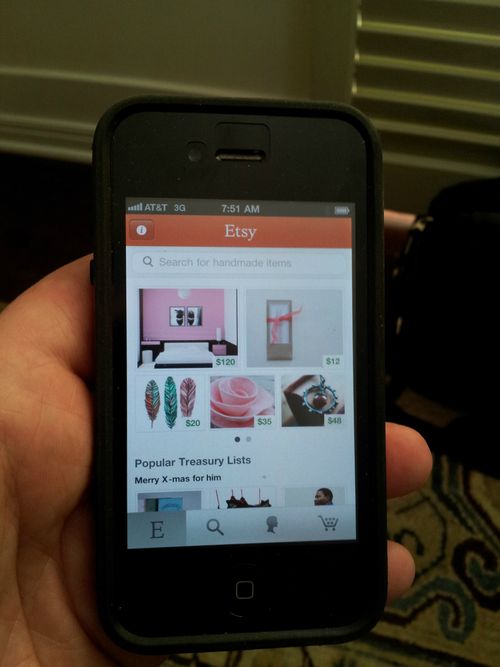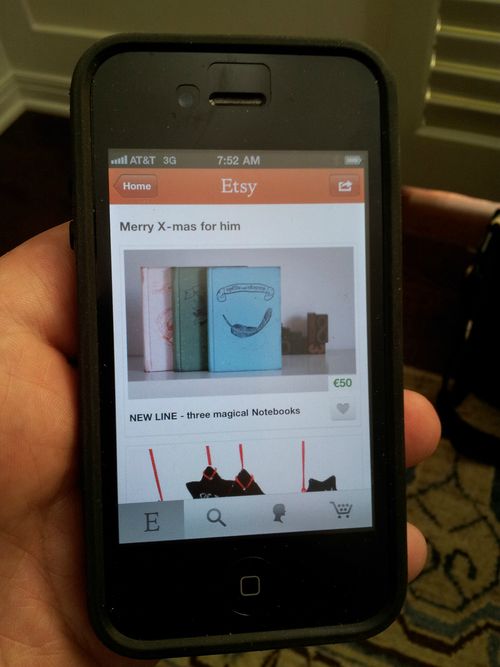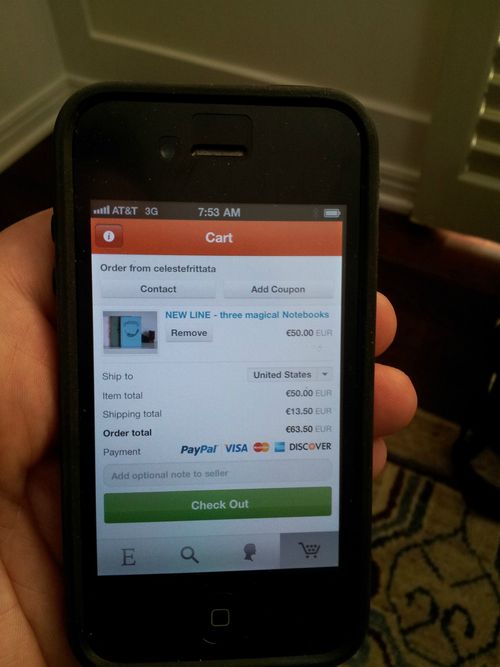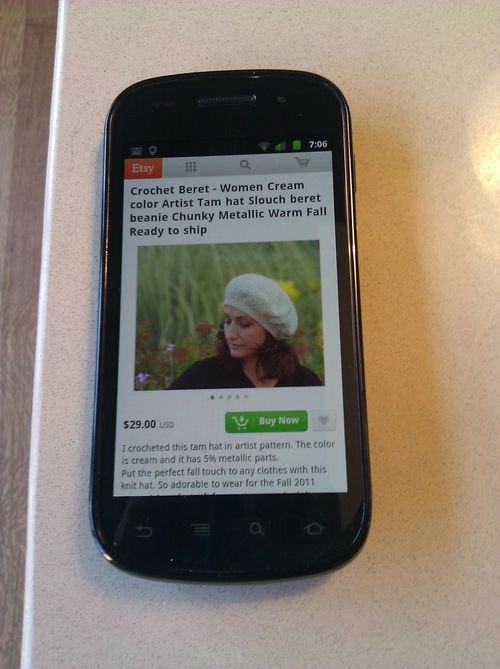Chad is the CEO of Etsy and I think I'll skip the intro because this post speaks for itself.
————————————
Recruiting & Culture
When Fred asked me to write a guest blog post, I told him initially that I was going to write about recruiting and culture. Both are topics that I've learned a lot about in nearly twenty years working in companies of all kinds and contexts: public and private, large and small, struggling and ascendant, on the east and west coasts. As I sat down to write, I realized that how you recruit people and your recruiting approach defines and continually reveals the culture of your company, and it quickly became clear to me that recruiting and culture are yin and yang. In recruiting, a successful outcome usually means a candidate saying yes to your company, and at that moment, the candidate becomes part of the company culture. Below are some of the things I've learned to do over the years when it comes to recruiting and culture.
Make recruiting a top priority at the CEO level
Former IBM CEO Lou Gerstner wrote a book about IBM's late-90s turnaround and said: "culture isn't just one aspect of the game, it is the game."" The word "recruiting" can easily be substituted for culture. In my career, I've participated in a number of searches for HR executives and staff. Without fail, the least successful ones were those where the premise was "we need someone/a team to own the culture and/or recruiting." (This is a similar corporate pitfall to looking for someone to "own innovation" but that's another post.) A great head of HR is critically important but culture and recruiting are owned by everyone if they are successful. As Gerstner noted, one of a CEO's most important responsibilities is tending to the culture. To that end, a CEO must not only drive recruiting at the executive level but at any level where it will make the difference in closing a critical candidate. On a practical day-to-day level, that means that I will drop nearly anything I am doing to help close a key candidate. Talent is that important and it's always worth my time.
Communicate the company vision broadly and directly
In his legendary recruiting pitch at Apple, Steve Jobs said to John Sculley, "Do you really want to sell sugar water, or do you want to come with me and change the world?" A strong vision can quickly set your company apart from others. In his pitch, Jobs understood the power of the appeal to something larger than simple manufacturing of goods for a particular market. As Antoine de Saint-Exupery wrote, "If you want to build a ship, don't drum up the men to gather wood, divide the work and give orders. Instead, teach them to yearn for the vast and endless sea." Jobs' conversation with Sculley happened 1-on-1, but the forms of communication available today mean that you can communicate the mission and vision of your company more broadly and directly than ever, which is what I did when I blogged in May about our long-term vision for Etsy. It has never been easier to tell your own story and talk about your company directly with the people you want to reach. Talking to the media is good, too, but traditional media outlets have their own publishing schedules, editing quirks, and editorial voices, so you should always keep a direct channel open. On a purely pragmatic level, communicating directly gives candidates a deeper sense of what your company is trying to do and they come into the process knowing what your company is all about, often self-selecting to your mission. I've found that this takes the recruiting process up a level.
Challenge traditional notions of corporate transparency
A compelling vision is just the beginning of a conversation. To be successful in recruiting efforts, you have to have tangible substance to what you say. Current and potential staff demand greater transparency into your company than ever before. Typically, candidates want to know two basic things about your company: 1) how is the company doing from a business standpoint? and 2) does this company operate in a way that I can believe in? The second is arguably more important than the first, since performance metrics rise and fall, valuations go up and down, and stock prices fluctuate. Culture and values persist.
Most private companies don't disclose any financial information, but for years now, we at Etsy have been publishing key metrics from the Etsy marketplace in a monthly "weather report." Our main goal in publishing this information is to let the Etsy community know how the marketplace is doing overall, but publishing this data also helps immensely in recruiting. When you're trying to convince a candidate to move across the country or choose between you and a company that holds its numbers close to the vest, providing this kind of information can be the deciding factor.
Measuring how a company operates from a values standpoint is much more challenging than reporting financial numbers because it is inherently difficult and there are few standards. Fortunately, new models are emerging to make such measurements possible. At Etsy, we believe that as a community-based business — a business where our company's success is entirely linked to the success of our larger community — our company should hold itself to a higher standard of social responsibility and transparency. We are not alone, and an entirely new form of business — the "benefit corporation," or B Corp — is developing to address the challenge of running for-profit businesses within a values-based framework. The non-profit B Lab has created a quantitative independent third-party assessment to measure companies' success against rigorous values and responsible practices. Etsy recently took the assessment and qualified to become a Certified B Corporation ™. Any potential employee can see how we measured up by looking at our score on the B Lab web site. We passed, but as you can see, there are areas where we clearly could do better. Diversity is one area for improvement, and we're actively and transparently working to improve our score. Recently, we provided scholarships for women to attend Hacker School to address systemic issues in bringing women into software engineering by providing training. We also announced our support of Code:2040, a program to increase minority representation in software engineering. We are doing all of this in the full view of the world. Over time, our community, staff, and potential candidates will be able to see how our company practices measure up to our stated values and where we are making improvements. I believe top talent is going to increasingly expect this type of transparency and companies that provide it will have a recruiting advantage as they compete against companies that are merely selling the metaphorical "sugar water" from Jobs' recruiting pitch.
Be patient: "Slow Recruiting"
Relationships are the currency of recruiting, and while recruits sometimes appear almost out of nowhere and close quickly, the truly great candidates can take a long time. John Allspaw runs technical operations at Etsy and I think John is the best in the world at what he does. When I hired John at Etsy in 2009, the near-term recruiting process was a few months, but the actual recruiting process had been going on for a decade. Nearly ten years earlier when I was CTO at Salon.com in San Francisco and John ran the ops team there, he came to me and said he needed to move back to Boston for family reasons, so he had to leave the company. I said, "Why? You can just work from there. We'll keep the same salary and nothing will change except where you work." John went back to Boston, the family situation improved, and John came back to San Francisco a year later. He never left the company and we made a difficult situation much easier for him. Since then, we have worked together at three different companies. Our relationship has persisted through boom and bust business cycles, massive upheavals in our personal lives, and changes in our business relationship. Looking back, I started to recruit John to lead Etsy's ops team when I found a way for him not to leave Salon in 1999. I call this (with tongue slightly in cheek) "Slow Recruiting."
Recruiting too slowly for key positions can be a liability in a fast-paced industry, but the larger point is that the way you and your company treat people over longer periods of time has more impact on your recruiting efforts than anything else. Whether it's making a tough situation like John's work and turning it into a win-win, talking patiently with someone at a conference when your time is constrained, or thoughtfully answering an email from a college student seeking advice, recruiting goodwill adds up over time. If you're just entering the industry and expect to be recruiting at any point in your future, I assure you that people will remember things you said to them fifteen or more years later. Keep that in mind at all times. It could be the difference in closing a key candidate ten years from now.
Open-source your culture: generosity of spirit
Most people really want to work for successful companies with really smart people where generosity and helping are the cultural norm. There are specific ways to institutionalize sharing in your company and demonstrate that spirit to the world, particularly in engineering where recruiting is most intense. In early 2010, we launched our engineering blog and named it Code as Craft, tying the mission of engineering back to the larger culture of craftsmanship in the Etsy community. Several months later, we formally introduced the concept of "generosity of spirit" at Etsy and asked every engineer do one of the following things within the year: 1) present at a conference, 2) write a blog post for the engineering blog, or 3) contribute to open source. Since then, the team has open-sourced 40+ projects, written over 70 blog posts, and posted over 50 engineering presentations, spawning a Code as Craft speaker series in the process. The team does these things because they love sharing their work, but as recruiting activities, they are incredibly effective because the software and information we provide helps potential candidates solve real problems. Cold-calling candidates doesn't come close to the warm intro of a candidate using the software you've open-sourced and thoughtfully explained to them.
Kellan Elliott-McCrea (Etsy CTO) says: "If your culture isn't explicitly leaky, if it doesn't aspire to change the world beyond the walls of your business, if it isn't captured in the product you're building and your users' experience, then it probably isn't culture, it's just cheerleading and team spirit burning up expensive inputs of time and company outings. Culture is lived, and it's why generosity of spirit is such a key piece of our team culture" (and therefore a key part of our recruiting philosophy and approach).
Cultivate the spirit of the organization
In his 1954 classic, The Practice of Management, Peter Drucker devoted an entire chapter to what he called the "spirit of an organization," writing: "Management by objectives tells a manager what he ought to do. The proper organization of his job enables him to do it. But it is the spirit of the organization that determines whether he will do it. It is the spirit that motivates, that calls upon a man's reserves of dedication and effort, that decides whether he will give his best or do just enough to get by." At the end of the day, a candidate will look most closely at the spirit of your company and the visceral sense he/she gets from visiting your office, reading your blog posts, following what members of your team say on Twitter, and reading about you in the press. It's hard to quantify this spirit, but you know it when you've got it, and you know how painful it is when you don't. When it comes to recruiting and culture, a leader is mostly responsible for tending to the spirit of the organization, and for making whatever adjustments need to be made to keep that spirit strong and powerful. In the end, that spirit matters more than anything.
Thanks to Kellan Elliott-McCrea (Etsy CTO) and Randy Hunt (Etsy Creative Director) for their feedback on this post.
















